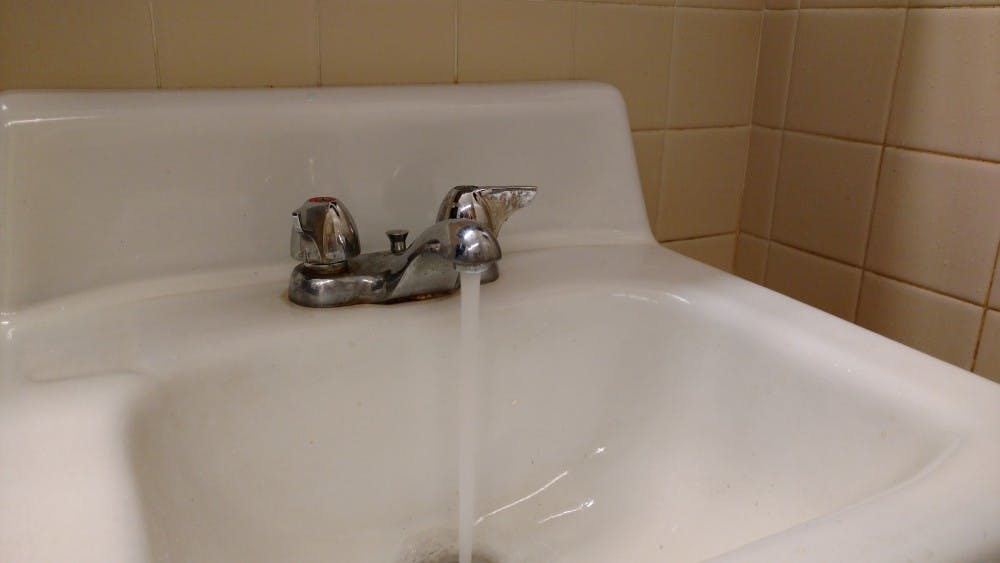University of Portland is joining other Oregon schools who have found elevated levels of lead in drinking water, according to an email sent by Vice President for University Operations Jim Ravelli Thursday.
The email states that elevated lead levels have been found in Kenna, Shipstad and Villa Maria halls, with contamination levels ranging from .016 to .031 parts per million (ppm) - with an average of .024 ppm. According to the email, University administration has communicated with these hall communities directly.

The email sent to Kenna Hall residents said the three locations were found to have elevated levels were only in room sinks, not water fountains or taps in the common bathrooms. The affected fixtures were replaced in response to the findings.
Students in affected dorms have been advised to use filtered water bottle filling stations, water fountains and taps in common bathrooms for drinking water. Ravelli’s email said UP is in the process of testing other buildings on campus, but did not mention whether UP students, faculty and staff should take any precautions in the meantime.
Lead is a toxic metal that can be harmful to human health even at low exposure levels, and can accumulate in one’s body over time. While young children and fetuses are most at risk, the EPA states that lead exposure in adults can lead to cardiovascular problems, decreased kidney function and reproductive problems.
“No actionable levels” were found in water from Christie, Mehling or Corrado halls. Fields, Schoenfeldt, Tyson and Haggerty halls were not tested because they were built more recently. The Commons and other food service locations, Buckley Center and a sample of University-owned rental homes were also tested.
“Typically the EPA recommends a level of 20 parts per billion (ppb) or .02 parts per million (ppm) as the safety standard for drinking water from public drinking systems,” the email states. “However, UP has elected to follow the more stringent threshold level of 15 ppb or .015 ppm set by the Portland Water Bureau and used by Portland Public Schools.”
Contrary to Ravelli’s email, according to the EPA, any drinking water above .015 ppm contamination does not meet the safety standard and requires additional action.
In recent months, Portland Public Schools and the University of Oregon have also been under fire for elevated lead levels in drinking water.
The Beacon will continue to follow this situation and post updates.
---
Below is the general email sent by Ravelli in full:
"At the University of Portland, we take the health and welfare of our students, faculty, staff, and visitors very seriously.
Recently, as information was made public on high levels of lead found in the water supply of some schools and park facilities around the Portland area, the University chose to proactively test our own drinking water sources in buildings across the campus during this past summer.
We began by testing our childcare center, food services locations including Bauccio Commons, Buckley Center, residence halls, and a sample of our rental homes. We recently received the results for these facilities. The majority of the samples found no elevated lead levels in the drinking water, and only slightly elevated levels were found in 15 of 130 samples. A majority of these elevated samples were in unoccupied rental homes. All of these elevated samples were found in sinks, not in drinking fountains or taps dedicated for use in food preparation or for drinking water.
Typically the EPA recommends a level of 20 parts per billion (ppb) or .02 parts per million (ppm) as the safety standard for drinking water from public drinking systems. However, UP has elected to follow the more stringent threshold level of 15 ppb or .015 ppm set by the Portland Water Bureau and used by Portland Public Schools.
The highest level of lead found in UP’s tests was a reading of .24 ppm in an unoccupied rental home. The readings at other locations ranged from findings of .016 to .031 ppm, with an average elevated reading of .024 ppm. In the residence halls, some elevated levels were found in Kenna, Shipstad, and Villa Maria Halls. We have communicated directly with these hall communities. No actionable levels were found in tests in Christie, Corrado or Mehling Halls. We did not test Fields, Schoenfeldt or Haggerty and Tyson Halls, due to the newer age of those buildings. For reference, UP’s highest reading of .24 ppm can be compared to levels as high as 57.6 ppm in other educational facilities in the Portland area.
As a preventative measure, we have taken the immediate action of either replacing affected fixtures or installing a filtering system in these locations. All drinking fountains in the residence halls are already filtered, as are the halls’ water bottle refill stations.
In the meantime, UP will continue testing water in the remaining buildings and will take immediate action for remediation if results warrant. We will keep the campus community informed of any further developments as testing progresses.
If you have questions or concerns about drinking water on campus, please contact Jim Ravelli, Vice President for University Operations, at 503-943-7540 or ravelli@up.edu."








